Journalist hyenas expected this to be a decade's affair. A kidnapper scandal like the loud kidnapping of Lindbergh's baby, which has just shaken America. In history, however, nothing was right. There was no gangster gang, no fabulous ransom demands. So who and why kidnapped the little daughter of the consul?
The shoe was covered in mud, and at that particular moment it was of the utmost importance to Patsa. She tried to wipe one shoe on the other. The stubborn brown stain flipped to the other side in response. The girl was saving herself with a stick. The brown stain not only has not disappeared but also spread to the stockings. It was too much. Pouting Patsy decided she needed help.
"Marysia ... Maaaris ..." - she repeated, tugging at the hand of her gift certificate. With no effect. The caregiver devoted all her attention to some strange gentleman. For some reason, she burst into fake laughter every now and then, strained strangely, and her face was almost red like a tomato. Most of all - she did not pay attention to her ward at all.

Pre-war photograph of an anonymous girl. Illustrative photo.
Patsy stamped her foot and tears began to pour into her narrowed eyes. She was all four years old. And as a big girl, she knew very well that nothing worked for nurses like crying. This time, however, the effect was at best half-way. Maria growled irritably that there were bushes right behind the bench. And that's where she ordered her shoes to be cleaned.
Patsy's face brightened instantly. The trip into the brush was a real adventure! The girl grabbed her poles, stood proudly upright and marched into the brushwood like a soldier on a parade. She quickly disappeared behind the nearest bush. And it took a good thirty minutes for bona - Maria Stanisławiak - busy flirting, to realize that the child had not returned yet.
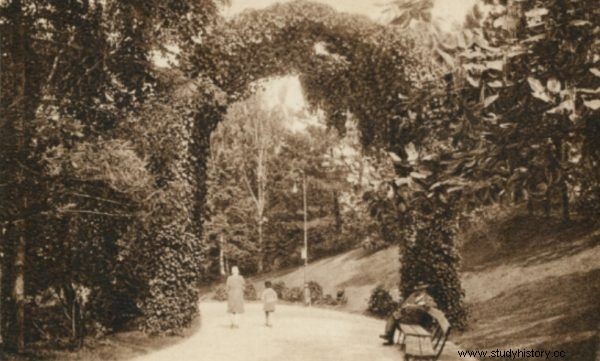
Ujazdowski Park in Warsaw. Illustration from before 1939
Patsy's not coming back
The caregiver drenched a cold sweat. Panicked, she ran between the benches, questioned the other nurses, and accosted any child who looked like Patsy at first glance. Time passed and the girl was nowhere to be seen. It was as if it had dissolved into thin air. Maria knew that the longer she waited, the more likely the blame would be placed on her. Moreover, it was quite difficult to search five hectares of Warsaw's Ujazdowski Park alone. You should have called for help. A breathless babysitter burst into the apartment of her employers at 16 Górnośląska Street. And, of course, not with any boy, but with the other nannies. A moment of inattention was enough for the child to spontaneously move away.
Patsa's mother, Gwendolina, immediately took action. She called for her husband, and she herself rushed to the park to save her daughter. It was after six in the evening. The girl had disappeared over an hour earlier and her fate remained unknown. Fortunately, it was not getting dark yet - it was the middle of summer after all. There was also no risk that the girl would get cold. The temperature was twenty-five degrees, the sky was cloudless. Only it was necessary to find her before sunset.
After another quarter of an hour, the park was swarming with police. The squad of officers dispersed among the alleys, firmly detaining all the little girls. They were grouped in one place and, against the protests of their guardians, they were subjected to vigorous interrogation. Meanwhile, an unprecedented mobilization of the investigative apparatus was taking place in the city.
One hundred foot and motorcycle patrols were dispatched. The alarm went to every police station. Officers working on the outskirts of Warsaw stopped and searched cars. Provincial services were also notified, fearing that the kidnappers would try to take the girl outside the capital. The kidnappers, because for Antoni Sitkowski, the head of the Warsaw Investigation Office, there was no doubt that it must be about much more than a simple disappearance. Patsy was the daughter of the American consul, Stewart E. McMillin. The scandal threatened with an international scandal. And yet the whole world knew that in such cases one could not wait for anything.
New lindbergjada
It was August 1932. Less than six months earlier, a crime hailed as the case of the century took place in McMillin's homeland. A twenty-month-old child has disappeared from the crib in his own home:the son of the famous pilot and Knight of the Medal of Honor, Charles Lindbergh. The family paid the kidnappers a staggering fifty thousand dollars. Today, including inflation, it would be almost a million. In return, they only received the remains of the child. Inspector Sitkowski did not intend to let a similar story repeat itself in Poland, and on his watch. If any audacious gang were emboldened by the information about the Lindbergh case, it was to act without mercy.
The girl's family did not trust anyone, and the inspector only fueled the paranoia of the overseas diplomat and his wife. Maria Stanisławawiak was quickly arrested, because an accidental flirtation in the park could be a cover for a calculated criminal action. Next in line was the McMillin cook. Employers knew that in the past she had invited unidentified men home. And that put her in a very bad light.
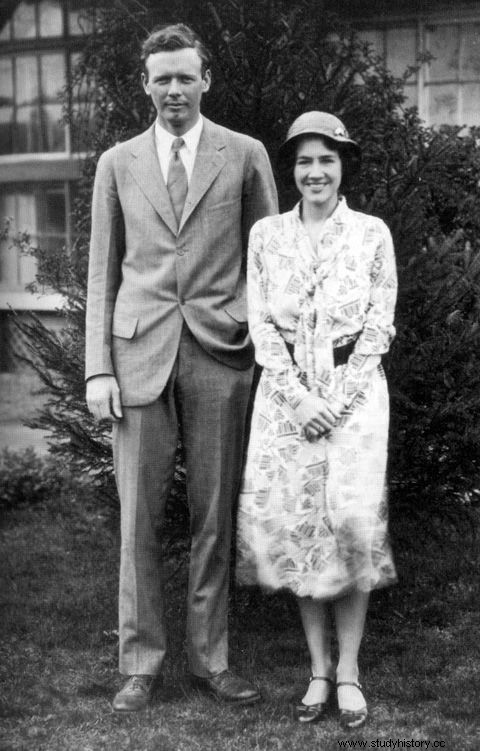
Charles Lindbergh with his wife. The famous aviator who kidnapped and killed his son
Finally, the McMillins remembered Helena Szkudlarska. And it was her main suspicion. Szkudlarska was Patsy's former nanny. Apparently, she was doing badly, and it has reached the ears of the McMillins that they are being treated for syphilis or another venereal disease. Scandalized, they quickly dismissed her job, listening to the angry threats as she left. At the time, it seemed to be just empty yells. Now, however, the consul became certain that if someone kidnapped Patsy, it was the immoral Szkudlarska, marked with syphilis.
Even before the day was over, the woman was pinned down and subjected to intense interrogation. Meanwhile, the results of the investigation were feverish in the McMillin apartment. Finally, around midnight, the telephone rang. The consul jumped up and ran to the receiver. All the blood drained from his face. He listened for a moment, then let out a loud sigh of relief. The girl was found. Terrified, crying but alive.
How many newspapers, so many versions of the truth
The accounts of the individual newspapers were mutually exclusive. It was as if the tabloids were describing several different stories. Or - as if someone was trying hard to silence the matter and cover up the more drastic details.
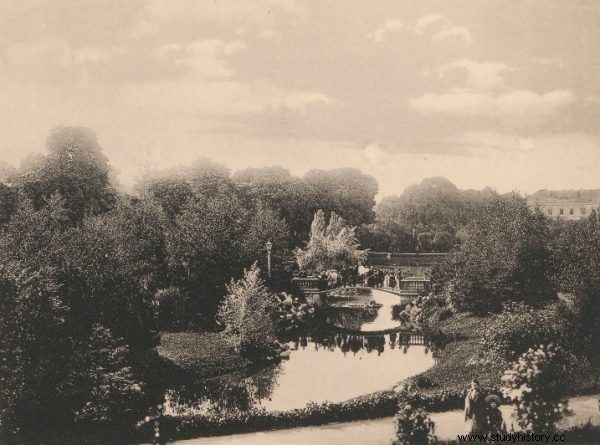
Ujazdowki Park in Warsaw. Photograph from the second decade of the 20th century
The Illustrated Republic reported that the girl was wandering around the street and that some random women had escorted her to the police station. Journalists suggested that an unidentified accomplice of Szkudlarska panicked at the news of her imprisonment. Having no other option, he released the baby.
Good Evening went even further in its conclusions. On the first page of the August 13 issue, it was reported that ... no kidnapping had occurred. The child "ran, jumped" and finally - away from the babysitter. The girl walked well over a kilometer on her own, and when she was almost at the end of Czerniakowska Street, she "stopped and started crying, saying that she wanted to see her daddy". Here good people took care of her.
The newspapers were not able to agree even on the profile of the main character. For some, she was a lost boy, chatting only in English. For others - an exceptionally resolute girl for her age who, apart from her mother tongue, also spoke Polish and German.
"I can't leave the baby or she will cry"
Another day had to pass for the press to start presenting a common front. And to start sniffing for the truth. It is best to have a version that will attract the attention of readers and make crowds of excited people stand in front of the kiosks, ready to spend 10 groszy for the latest issue of the boulevard.
It was established that the girl actually left the voucher herself. After cleaning her shoes, she peeked into the public restroom, then began to carelessly explore the rest of the park. At one point, an unknown man took her way. He promised to help find a way to the bench where Maria Stanisławiak was sitting. Instead, he led Patsy to Czerniakowska Street and told him to enter an inferior restaurant at number 193.
He ordered vodka for himself. The child, on the other hand, bought waffles and soda water. He stroked Patsy's head, hugged her, did his best to calm her down. He spent several hours in the pub, in the meantime he went outside a few times and then returned immediately. The bill grew, while the man did not let anyone know that he was ready to pay it. Staff started paying more and more attention to him.
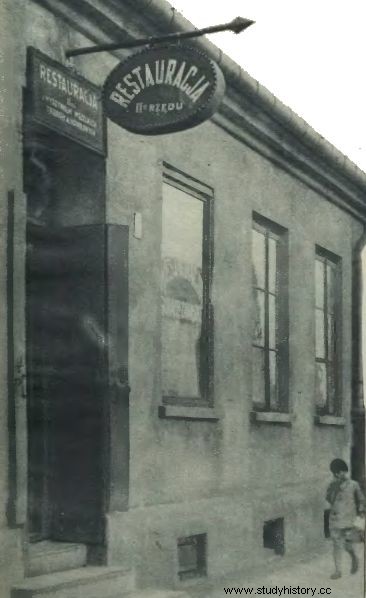
A pub on Czerniakowska Street, where the kidnapped girl was led. Illustration from the Secret Detective
The gentleman was a ragged man, which clearly contrasted with the girl's neat clothes. In addition, he was fidgeting restlessly, he was looking out the window, he was clearly worried about something. The impatient owner of the pub, Kazimiera Opatkowska, approached his table and demanded money. She later told the press that she had a bad feeling from the beginning. However, it is more about the bill than the mismatched company.
The client was avoiding, trying to delay the case. Finally, he stated that his wife had put his wallet into a second jacket and that he had nothing to pay for. Opatkowska took a waiter to help. She ordered the guest to go home with the guest and collect the debt. At the same time, however, she demanded that the child remain in the restaurant until the bills were settled. The stranger was speechless for a moment. It was evident that he was getting more and more nervous.
- "I cannot leave the child, because he will cry when left alone" - he objected, claiming that the girl is, of course, his daughter.
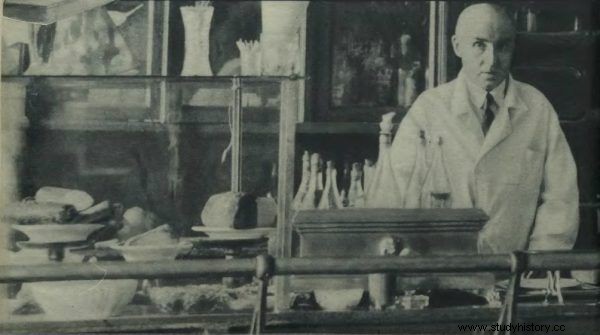
The bar of the pub at Czerniakowska Street. Illustration of the Secret Detective
- “You did not cry when you first left, you will not cry now. The child stays, ”Opatkowska insisted on, who remembered well how much vodka the gentleman drank. And how much did the ordered waffles cost? The client, pushed back against the wall, finally gave up. When he left, Patsy was still sitting politely, not saying a word. Another hour had to pass for her to confide in the restaurateur that she did not know the strange gentleman and that she would very much like to return to her parents. She prudently gave her name and address.
$ 10,000 ransom
Bronisław Drewniak turned out to be the kidnapper. A man well known to the officers. He has had at least seven convictions for blackmail and fraud, and his portrait has appeared in every police album of criminals. Nobody had to convince journalists that the man was acting within a precise plan and that the real "Lindbergjada" was close to being repeated in Poland.
The popular criminal magazine "Secret Detective" explained after a week of investigation by the people of Inspector Sitkowski:
In the light of the collected data, it is more than certain that the consul's daughter was kidnapped (...) to extort a sumptuous ransom from her parents. The entire plan was paralyzed by the smooth operation of the police. Drewniak acted in agreement with Szkudlarska, who at At 8 o'clock she was supposed to arrive at the restaurant at ul. Czerniakowska. The blackmailers hoped that a child who knew Szkudlarska and who used to be very attached to her as his gift certificate, could easily be kidnapped by her outside the city and into a hideout.
Meanwhile, the police managed to arrest Szkudlarska shortly after the missing child alert, and this completely thwarted the criminals' plans. Szkudlarska lost the possibility of arriving at the appointed place, and Drewniak did not even have the money to pay the restaurant bill. And the child was saved .
The tabloid editors were delighted. Kidnapping a child for the purpose of extorting a ransom has not happened in Warsaw for at least twenty years. And it has never happened that the family of a foreign diplomat was targeted at a similar crime. The fact that the brain of the operation turned out to be a bitter nanny, who wanted to take revenge on the employers, added spice to the whole matter.
A sensational trial was in the way of the greatest matters of the era. This scandal even had the potential to cover up the story of the infamous Rita Gorgonova. The court reporters were rubbing their hands in anticipation.
In January 1933, when the police completed their investigation, the Illustrated Daily Kuryer argued that more devastating details had come to light. Even the amount of the planned ransom began to circulate. Drewniak and Szkudlarska wanted to demand - a trifle - 10,000 dollars. Of course, "under the threat of killing the child." They only argued about the place where the victim was to be imprisoned. According to some, it was planned to take her to the countryside. Others pointed to the hiding place in Wola.
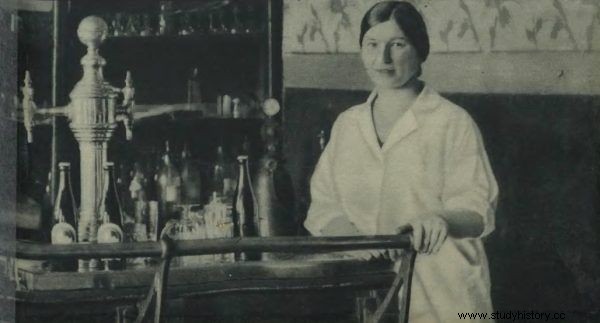
Kazimiera Opatkowska, hailed by the Secret Detective as a heroine of the Warsaw Lindberjada
In March, the prosecutor's office finally completed the indictment. Instead of further heating up the emotions, the journalists suddenly became speechless.
Manhattan in Warsaw
Until now, they had imagined the kidnapping as if it had happened in New York or Los Angeles. There were great conspiracies, secret hiding places, suitcases full of dollars and gangster threats. The investigative office only turned reporters into similar fantasies by trying to find grounds for them. But this "lindbergjada" did not take place in Manhattan, but in Czerniakowska.
On a dirty, threadbare street, full of the cheapest dives, beggars and alcoholics. The real circumstances of the crime were not a penny novel. Szkudlarska has not been charged at all. It turned out that the connection with the kidnapping was only in the minds of sensationalist policemen and scribblers. The ransom and conspiracy are gone. There was a kidnapping left, but not at all for the money. Drewniak - "a disgusting type of a hunchback with glasses, with a red, swollen face" - kidnapped the girl because he was crushed by the most disgusting desires. In the toilet of the pub, he would do "terrible things" with little Patsy, for which the girl did not even know the words. And then he tried to make a pledge of it, paying human for the alcohol.
The girl was inspected which fully "confirmed her stories". The consulate doctor testified that she had suffered "pervert injuries". In the course of psychiatric examinations it was also established that Patsy "is perfectly aware of the facts surrounding her, she is clever and perfectly aware of the course of events to which she fell victim."
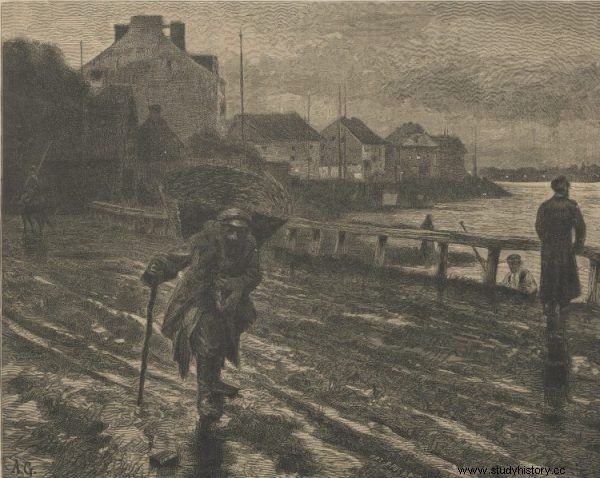
View of Solec from Czerniakowska Street. Graphics from the end of the 19th century. So much has not changed here over the years…
Drewniak was put on trial not only for kidnapping, but most of all for committing lewd acts against a child. He did not plead guilty, explaining that he was a syphilitic and if he raped the girl, she would inevitably be infected. A study was also carried out in this regard. It turned out that the four-year-old did in fact suffer from freshly acquired syphilis.
The McMillins didn't wait for trial. As soon as the investigation was over, they left Poland. The statements were read in absentia, behind closed doors. The newspapers announced the verdict on the last pages, under collective headings. The clog was sent behind bars for a year and a half. Funny little, but no one was outraged by the verdict. After all, the Second Polish Republic was a country in which decency was placed first. On the Vistula River, there could be no question of foreign indecency, such as pedophilia, rape or all sexual crime. In the opinion of the public, these phenomena did not exist. And if they didn't exist, then there was no reason to comment on them either.
